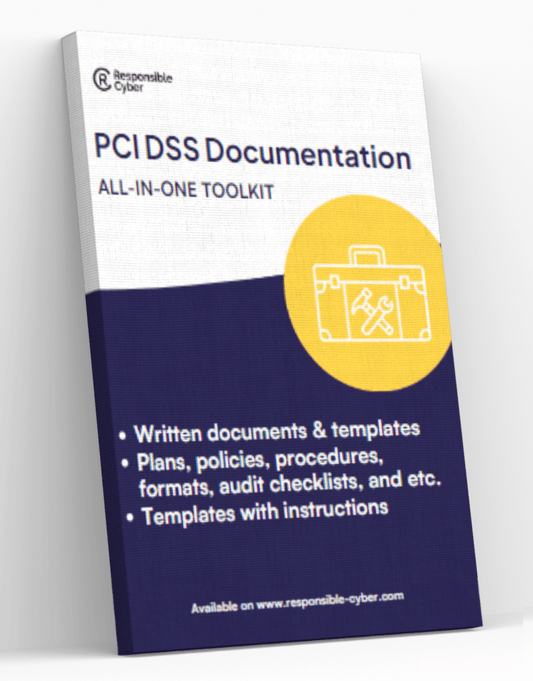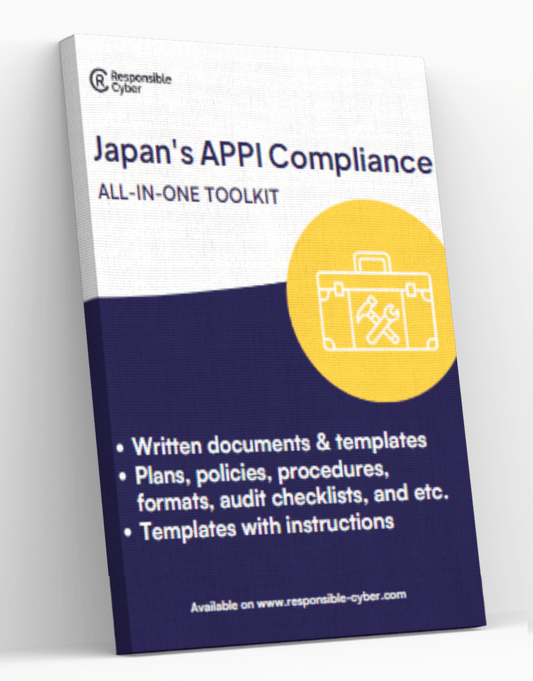Navigating Cybersecurity Regulations: What Your Business Needs to Know in 2024

As cyber threats continue to evolve and grow in sophistication, so do the regulatory landscapes designed to combat them. For businesses, navigating these cybersecurity regulations is both a necessity and a challenge. Staying compliant not only protects your organization from legal repercussions but also bolsters your overall cybersecurity posture. In this comprehensive guide, we will explore the latest cybersecurity regulations and compliance requirements for 2024, offering practical advice on how businesses can stay compliant and avoid legal pitfalls.
Understanding the Current Cybersecurity Regulatory Landscape
1. General Data Protection Regulation (GDPR)
Implemented in 2018, the GDPR remains one of the most stringent data protection regulations worldwide. It governs how businesses handle personal data of EU citizens, emphasizing consent, data protection by design, and the right to be forgotten.
Key Requirements:
- Data Protection Officer (DPO): Appointing a DPO for monitoring GDPR compliance.
- Data Breach Notifications: Reporting data breaches within 72 hours.
- Consent Management: Obtaining explicit consent for data processing.
2. California Consumer Privacy Act (CCPA) and California Privacy Rights Act (CPRA)
The CCPA, effective since 2020, and its successor CPRA, which took full effect in 2023, set the bar for data privacy regulations in the United States. These laws grant California residents extensive rights over their personal data.
Key Requirements:
- Consumer Rights: Right to know, delete, and opt-out of data sale.
- Data Minimization: Collecting only necessary data.
- Security Measures: Implementing reasonable security procedures.
3. Health Insurance Portability and Accountability Act (HIPAA)
HIPAA is crucial for businesses handling protected health information (PHI). It mandates stringent standards for the privacy and security of medical data.
Key Requirements:
- Privacy Rule: Safeguarding patient information.
- Security Rule: Implementing administrative, physical, and technical safeguards.
- Breach Notification Rule: Notifying individuals and authorities of data breaches.
4. National Institute of Standards and Technology (NIST) Cybersecurity Framework
While not a regulation, the NIST Cybersecurity Framework provides a comprehensive set of guidelines for managing cybersecurity risks. Many regulations reference NIST standards as a benchmark.
Key Components:
- Identify: Asset management, risk assessment.
- Protect: Access controls, data security.
- Detect: Anomalies and events, continuous monitoring.
- Respond: Incident response planning.
- Recover: Recovery planning, improvements.
Emerging Regulations in 2024
1. AI and Machine Learning Regulations
With the rapid adoption of AI technologies, new regulations are being introduced to address the ethical and security implications. These regulations focus on transparency, accountability, and fairness in AI systems.
Key Considerations:
- Transparency: Clear documentation of AI decision-making processes.
- Bias Mitigation: Ensuring AI models are free from discriminatory biases.
- Security: Protecting AI systems from adversarial attacks.
2. Data Localization Laws
Several countries are enacting data localization laws that require businesses to store data within national borders. This aims to enhance data security and privacy but poses challenges for multinational companies.
Key Requirements:
- Local Data Centers: Establishing or using data centers within the country.
- Data Transfer Restrictions: Complying with regulations on cross-border data transfers.
3. Supply Chain Security Regulations
Recognizing the vulnerabilities in supply chains, new regulations are emerging to ensure that businesses and their third-party vendors adhere to strict cybersecurity standards.
Key Requirements:
- Vendor Risk Management: Conducting thorough risk assessments of suppliers.
- Contractual Obligations: Including cybersecurity clauses in contracts.
- Continuous Monitoring: Regularly auditing and monitoring third-party security practices.
Practical Steps for Compliance
1. Conduct Regular Risk Assessments
Understanding your organization’s risk landscape is crucial for compliance. Conduct regular risk assessments to identify vulnerabilities and prioritize remediation efforts.
Steps:
- Identify Assets: Catalog all data assets and systems.
- Evaluate Risks: Assess potential threats and their impact.
- Mitigation Plans: Develop and implement plans to address identified risks.
2. Develop a Comprehensive Data Protection Strategy
A robust data protection strategy ensures compliance with various regulations and protects sensitive information from breaches.
Components:
- Data Encryption: Encrypt sensitive data both in transit and at rest.
- Access Controls: Implement role-based access controls and multi-factor authentication.
- Data Minimization: Collect and retain only the data necessary for business operations.
3. Implement Continuous Monitoring and Incident Response
Continuous monitoring helps detect and respond to security incidents promptly, minimizing damage and ensuring regulatory compliance.
Actions:
- Monitoring Tools: Deploy tools for continuous network and system monitoring.
- Incident Response Plan: Develop and test an incident response plan.
- Regular Audits: Conduct regular security audits to identify and address vulnerabilities.
4. Train Employees on Cybersecurity Best Practices
Human error is a significant factor in cybersecurity breaches. Regular training ensures employees are aware of the latest threats and best practices for preventing them.
Training Focus:
- Phishing Awareness: Educate employees on recognizing phishing attempts.
- Data Handling: Proper procedures for handling and storing sensitive data.
- Incident Reporting: Encourage prompt reporting of suspicious activities.
5. Engage with Legal and Compliance Experts
Navigating the complex web of cybersecurity regulations requires expertise. Engaging with legal and compliance professionals can help ensure your business stays on the right side of the law.
Benefits:
- Expert Guidance: Receive tailored advice on regulatory requirements.
- Policy Development: Assistance in developing and updating security policies.
- Regulatory Updates: Stay informed about new and evolving regulations.
Avoiding Common Pitfalls
1. Overlooking Third-Party Risks
Many businesses focus on internal security while neglecting third-party risks. Ensure your vendors and partners adhere to robust cybersecurity standards.
Tips:
- Vendor Assessments: Regularly assess the security practices of third parties.
- Contractual Clauses: Include cybersecurity requirements in contracts.
- Ongoing Monitoring: Continuously monitor third-party compliance.
2. Failing to Update Security Measures
Cyber threats evolve rapidly, and so should your security measures. Regularly update your systems, policies, and procedures to address new vulnerabilities.
Actions:
- Patch Management: Implement a robust patch management program.
- Policy Reviews: Regularly review and update security policies.
- Emerging Threats: Stay informed about new threats and adjust defenses accordingly.
3. Inadequate Documentation
Proper documentation is crucial for demonstrating compliance during audits and investigations. Maintain thorough records of all security measures and incidents.
Documentation Includes:
- Risk Assessments: Detailed reports of risk assessments and mitigation actions.
- Incident Logs: Records of all security incidents and responses.
- Compliance Audits: Documentation of compliance audits and findings.
Looking Ahead: Preparing for Future Regulations
1. Stay Informed
Regulatory landscapes are continuously evolving. Staying informed about upcoming regulations and changes is crucial for proactive compliance.
Strategies:
- Subscribe to Updates: Join regulatory bodies’ mailing lists and newsletters.
- Industry Groups: Participate in industry groups and forums.
- Consultants: Engage with consultants who specialize in cybersecurity regulations.
2. Foster a Culture of Security
Building a culture that prioritizes cybersecurity can help ensure compliance and reduce risks. Encourage all employees to take ownership of their role in protecting the organization.
Actions:
- Leadership Commitment: Ensure leadership sets a positive example.
- Employee Engagement: Involve employees in security initiatives.
- Continuous Improvement: Foster an environment of continuous learning and improvement.
3. Invest in Advanced Technologies
Investing in advanced security technologies can help address emerging threats and ensure compliance with future regulations.
Technologies:
- AI and ML: Use AI and machine learning for advanced threat detection.
- Blockchain: Explore blockchain for secure data transactions and integrity.
- Quantum-Safe Encryption: Prepare for future quantum computing threats with quantum-safe encryption.
Conclusion
Navigating cybersecurity regulations in 2024 requires a proactive and comprehensive approach. By understanding the regulatory landscape, implementing robust security measures, and fostering a culture of security, businesses can not only achieve compliance but also strengthen their overall cybersecurity posture. Staying informed about emerging regulations and continuously improving security practices will be key to avoiding legal pitfalls and protecting your organization in the ever-evolving cyber threat landscape.
Check other related articles:
- Addressing Universal Business Challenges: Cybersecurity, Supply Chain, and Regulatory Compliance
- Third-Party Risk Management Compliance in France
- Third-Party Risk Management Compliance in Australia
- Third-Party Risk Management Compliance in the UK
- Third-Party Risk Management Compliance in Singapore







